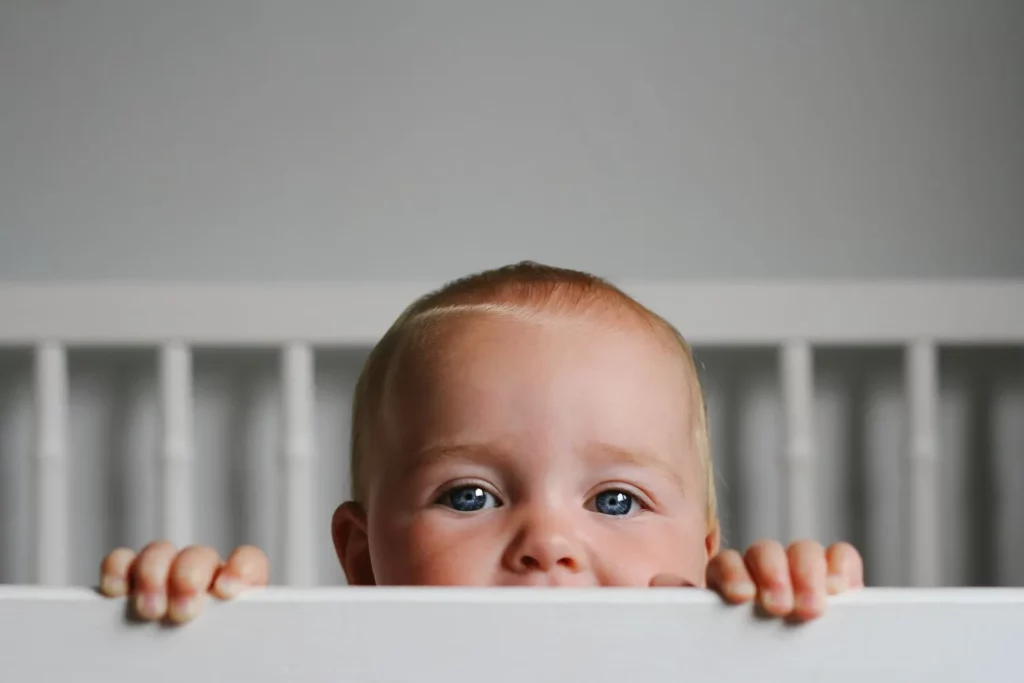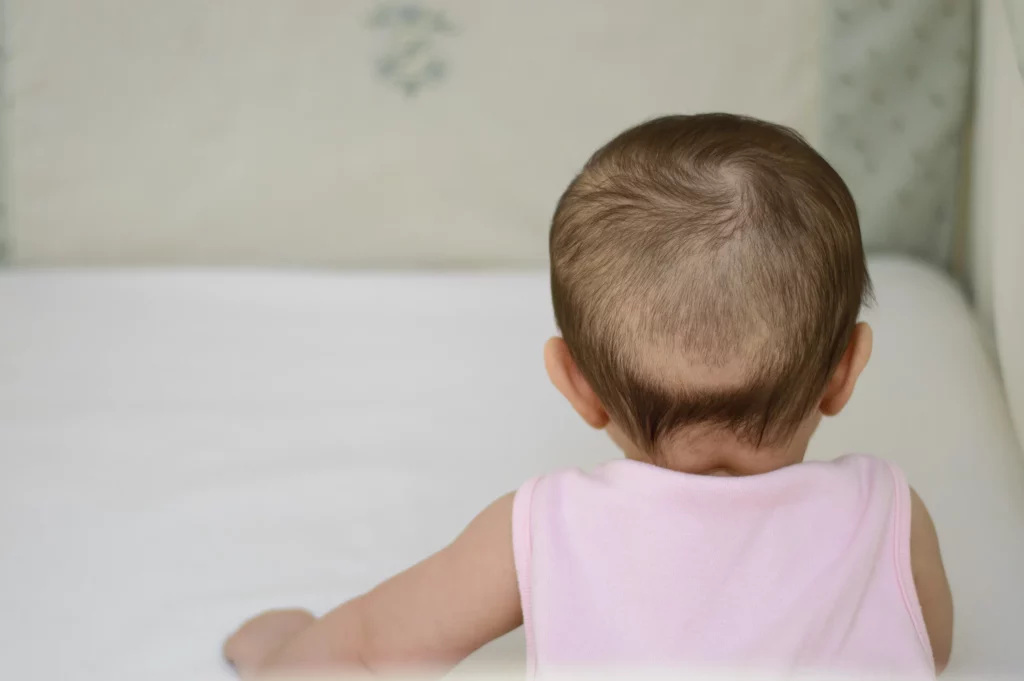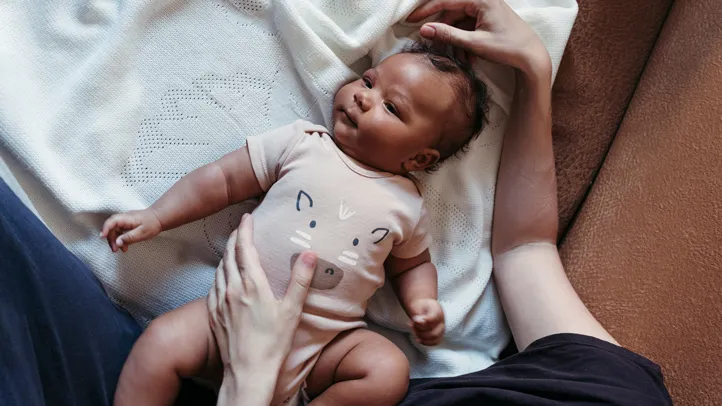Do you want to know what causes hair breakage in natural hair for babies? Keep reading to know what causes hair breakage in natural hair and how to stop the breakage.

Babies are precious bundles of joy, and their soft, delicate hair adds to their adorable charm.
However, it’s not uncommon for parents to notice hair breakage in their little ones.
Understanding the factors that contribute to hair breakage in infants can help parents take the necessary steps to keep their baby’s hair healthy and beautiful.
As you keep on reading, you will get to know the potential causes of hair breakage in babies and tips on how to care for their delicate hair.
What Causes Hair Breakage in Babies?

Here are the major causes of hair breakage in natural hair for babies:
1. Fine and Fragile Hair
Baby hair is naturally finer and more fragile than most adult hair.
This inherent fragility makes it more susceptible to breakage.
Also, baby hair is in the early stages of development and is still growing, which means it is not as strong as mature hair.
In addition, this natural characteristic can make baby hair more prone to breakage during everyday activities such as sleeping, playing, or being held.
2. Friction from Bedding
Another common cause of hair breakage in babies is the friction from bedding.
Babies spend a significant portion of their time lying down, whether in cribs or on play mats.
Also, the constant rubbing of their hair against crib sheets, pillows, or other surfaces can lead to hair breakage.
However, to reduce this type of friction, parents can use soft, smooth bedding materials and ensure that the baby’s head is adequately supported.
3. Tugging or Pulling
Babies often explore the world around them by grabbing and tugging at objects, and this includes their own hair.
While this behavior is a normal part of their development, if it becomes frequent or vigorous, it can cause hair breakage.
Also, parents and caregivers should gently discourage this habit and provide alternative objects or toys for babies to explore with their hands.
4. Genetic Factors
Genetics can play a role in a baby’s hair texture and strength.
Some babies may inherit fine and fragile hair from their parents, making them more susceptible to breakage.
While genetic factors are not something that can be changed, they can help explain why some babies may experience more hair breakage than others.
5. Infant Hair Care Products
Using the wrong hair care products for babies can contribute to hair breakage.
Baby hair is delicate and can be sensitive to harsh chemicals found in some adult hair care products.
Additionally, washing a baby’s hair too frequently can strip it of its natural oils, leaving it dry and brittle.
Using a gentle, pediatrician-recommended baby shampoo and, if necessary, a mild baby conditioner can help maintain the moisture and health of a baby’s hair.
6. Hairstyles and Accessories
While it’s rare for babies to have elaborate hairstyles, some parents may use hair accessories or styles that can pull on the hair and lead to breakage.
In addition, it’s essential to use gentle and soft accessories when styling a baby’s hair and to avoid any styles that put excessive tension on the hair shafts or scalp.
Loose and comfortable hair accessories are preferable to minimize the risk of breakage.
7. Lack of Moisture
Sometimes, infant hair can become dry, especially if not properly moisturized.
In addition, dry hair is more brittle and prone to breakage.
Using a gentle baby shampoo and a mild baby conditioner can help maintain hair moisture, preventing it from becoming overly dry and susceptible to breakage.
In addition, parents should also ensure that the baby’s scalp is clean and free from excess oils or dry skin.
8. Dietary Factors
In rare cases, a baby’s diet can impact the health of their hair.
Ensuring that a baby receives proper nutrition and hydration can contribute to the strength and vitality of their hair.
Interestingly, breast milk or formula provides essential nutrients for hair growth, and introducing a balanced diet when appropriate can further support hair health.
9. Environmental Factors
Sometimes, environmental factors can also affect the health of a baby’s hair.
Excessive sun exposure, dry air, or extreme temperatures can lead to hair damage.
Furthermore, to protect a baby’s hair from these environmental stressors, parents can provide shade when outdoors.
Also, they can use a humidifier indoors to maintain moisture levels and ensure the baby’s head is adequately covered in extreme weather conditions.
These measures can help prevent environmental damage and hair breakage.
In conclusion, hair breakage in babies is a common concern for parents, but it is typically a natural part of a baby’s growth and development.
Fortunately, there are steps parents can take to minimize hair breakage and promote healthy hair growth in their little ones.
Some tips for preventing hair breakage in babies include:
- Gentle Handling: Be gentle when handling your baby’s hair, avoiding excessive tugging or pulling.
- Soft Bedding: Use soft, breathable bedding to reduce friction on the baby’s hair while sleeping.
- Appropriate Hair Care: Use gentle baby shampoo and conditioner, and avoid overwashing.
- Moisturize: Keep the baby’s hair and scalp moisturized with gentle baby hair products.
- Protect from Environmental Factors: Shield your baby’s head from harsh sunlight and extreme weather conditions.
- Nutrition: Ensure your baby receives proper nutrition and hydration to support hair health.
By following these guidelines and giving your baby’s hair the care and attention it deserves, you can help maintain their lovely locks and keep them looking their best as they continue to grow.
Related Searches:
